Japanese Tea Ceremony
 About Traditional
About Traditional
Japanese Tea Ceremony
The Japanese tea ceremony is a traditional culture for conversation and enjoyment of matcha green
tea were a
carefully selected assortment of seasonal sweets, tea bowls, hanging scrolls, flower vases and tea
flowers.
It can be said to be the aesthetics of "hospitality" and "setting", in which the owner of the tea
house pours his heart
and soul into making his guests enjoy the tea ceremony.
At Nishiki Orizuruya, guests can make their own matcha tea and experience the Japanese world while
enjoying
delicious sweets and matcha tea.
History of the Japanese
Tea Ceremony
-
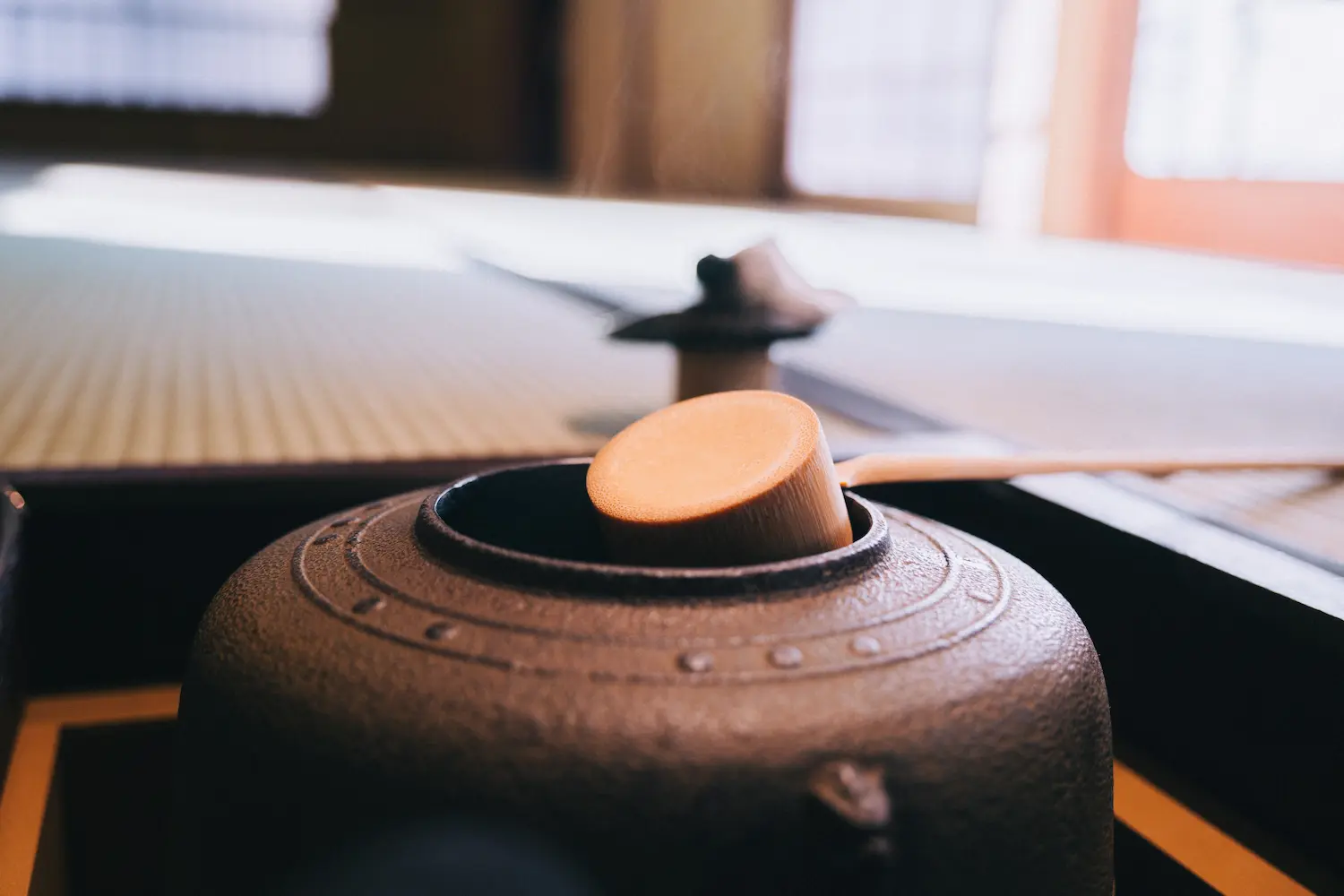
Tea culture in Japan dates back to the Heian period(794-1185) when tea was brought over from China by monks such as Saicho and Kukai. The culture of the Japanese tea ceremony was established in the latter half of the Kamakura period (1185-1333), when Zen Master Eisai introduced the Matcha method together with Rinzai Zen, and the tea ceremony developed into a unique Japanese culture, where people did not just drink tea, but gathered at a certain place to hold tea ceremonies and began to pay attention to tea ceremony rule and utensils, making and serving tea to their guests.
-
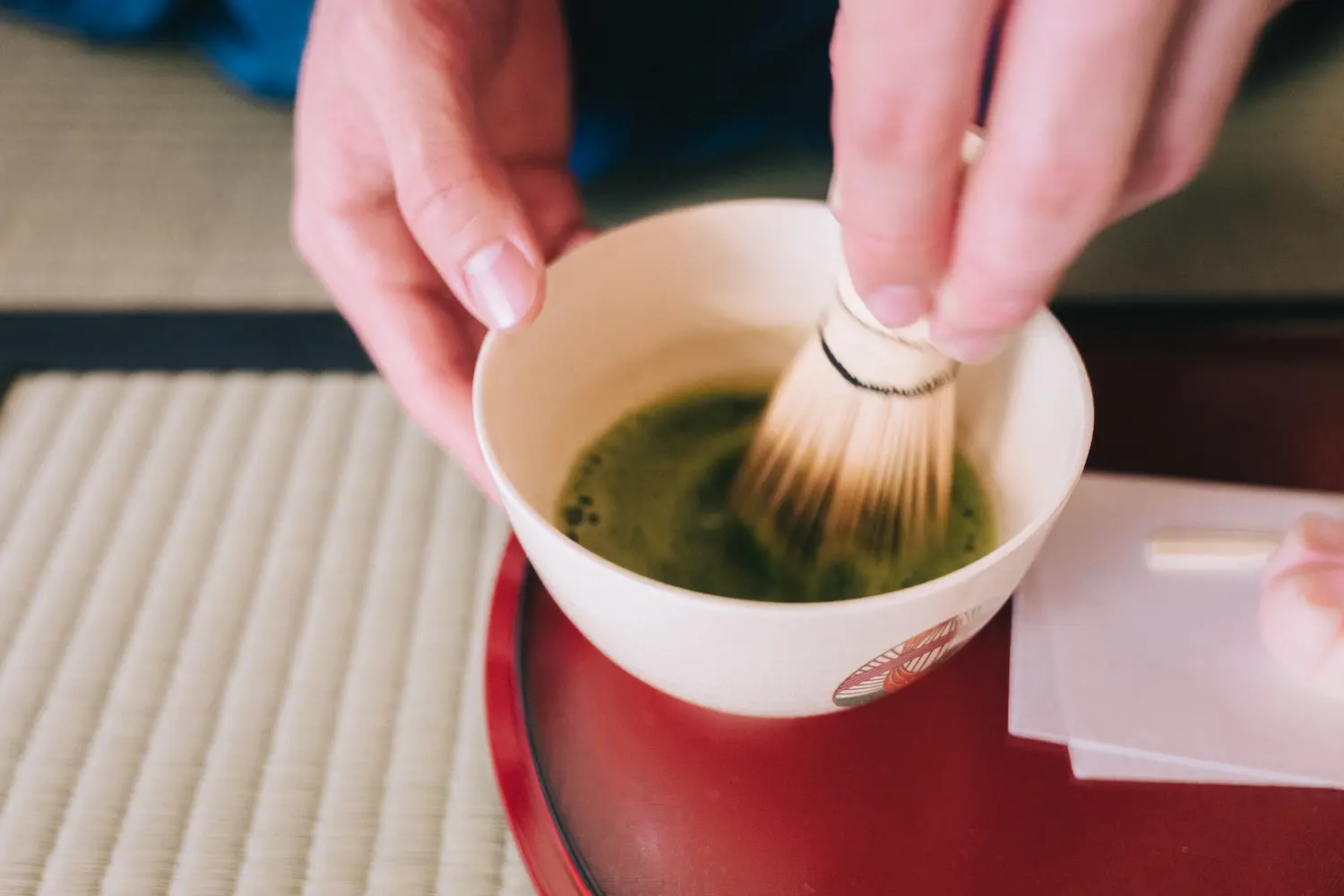
The tea ceremony (Sado) was originally called sanoyu/chanoyu, but the name became "Sado" in the Edo period(1603-1868). Sado can be translated in English as tea ceremony, the tea of way, chanoyu, etc.
Until the early Edo period, it was a pleasure for the high profile people, such as feudal lords and wealthy merchants, but from the mid-Edo period it became popular among ordinary people. From the Meiji era(1868-1912) onwards, the tea ceremony developed in various classes as a education and etiquette.
The experience of the Japanese tea ceremony, in which guests are treated with hospitality, is also a part of the modern Japanese Spirit of ”Omotenashi”.
 Flow of the Japanese tea
Flow of the Japanese tea
ceremony experience
-
 Dressing
Dressing
You can select the kimono of your choice and we will dress you.
For female clients, a hairdressing service is also available.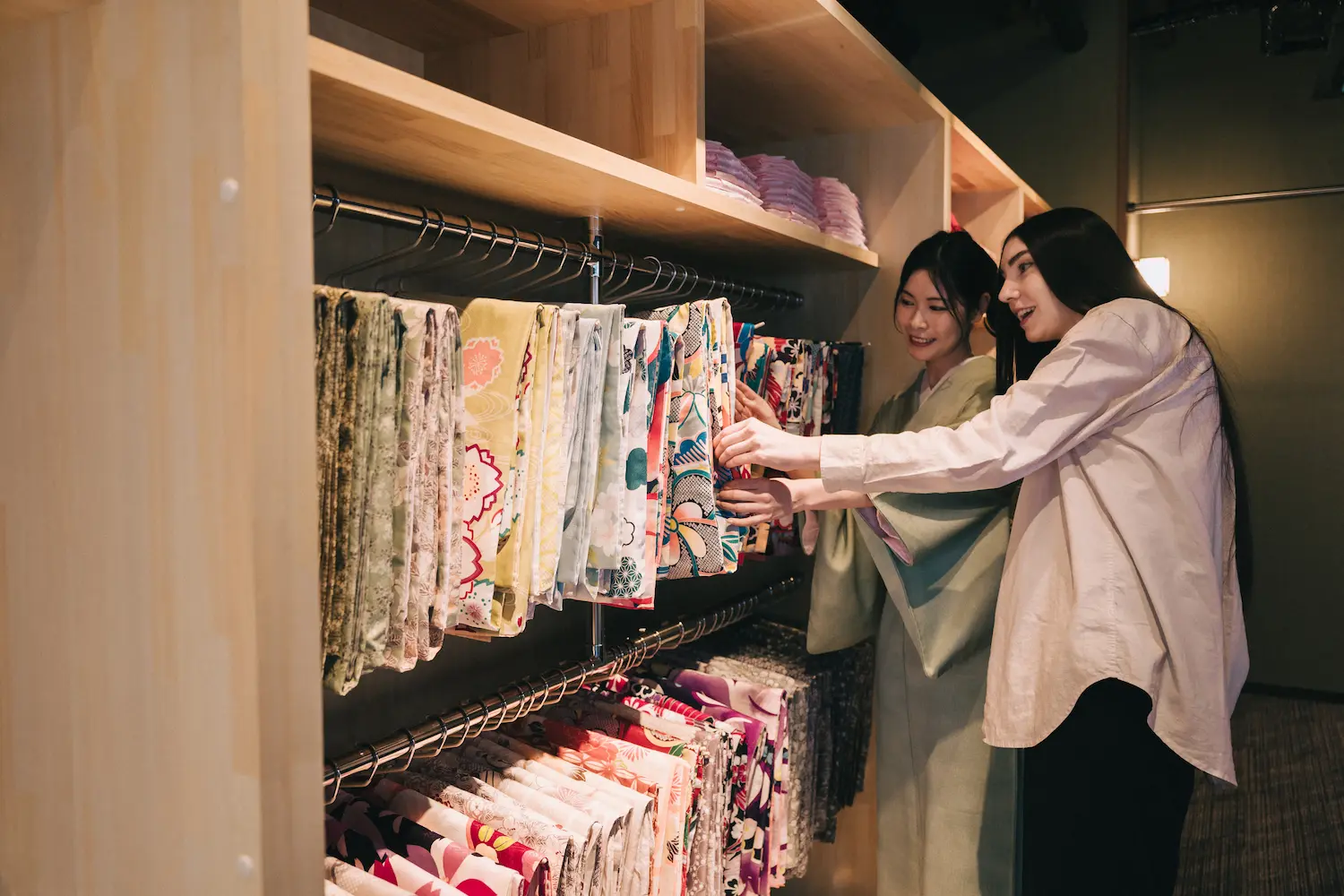
-
 Lecture
Lecture
In the Japanese tea room, you will learn about the history of the Japanese tea ceremony and how to prepare tea.

-
 Demonstration
Demonstration
You will be able to observe a professional tea ceremony method by the master of the tea house.
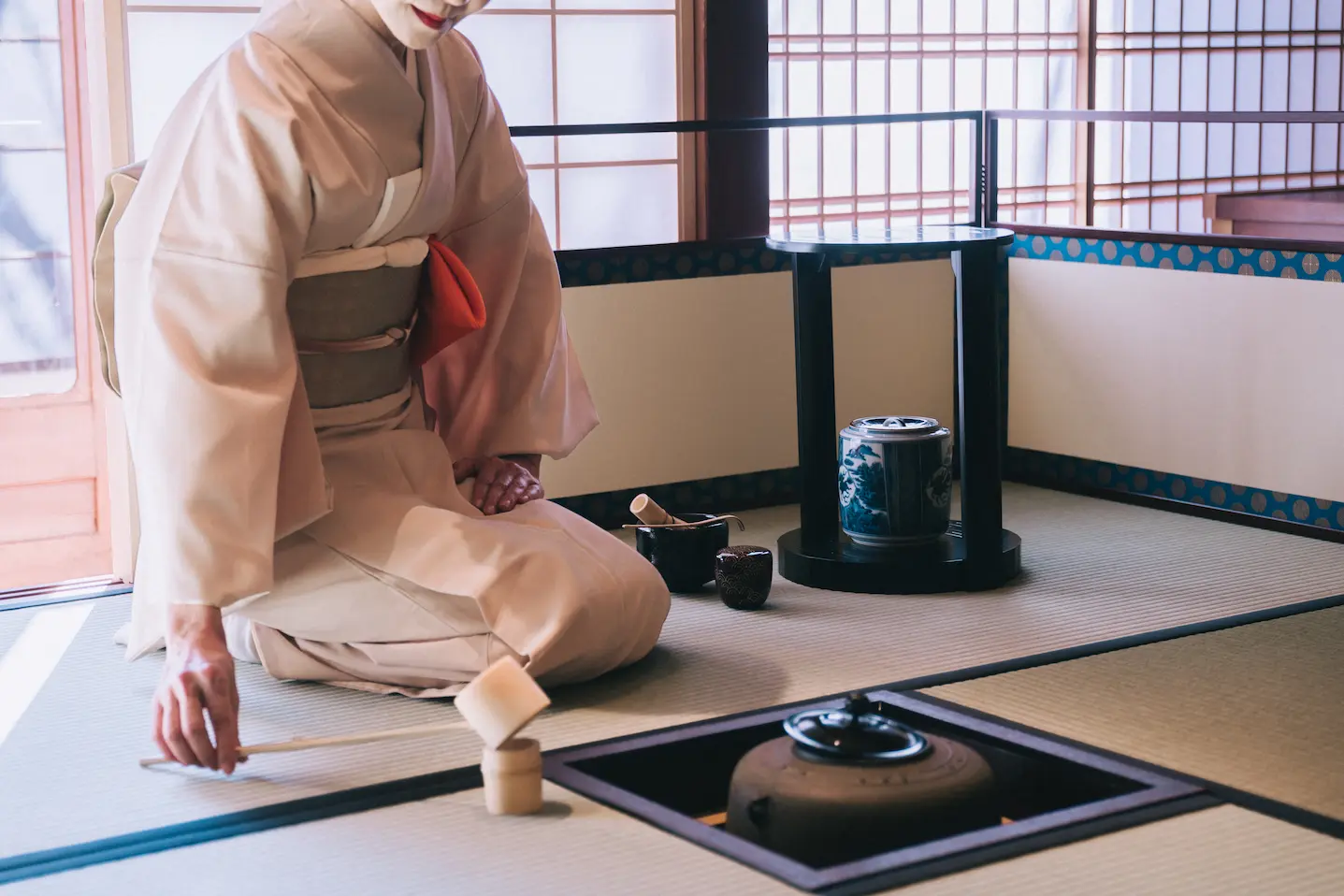
-
 Make tea
Make tea
You can actually make the tea by yourself.
Our staff will assist you.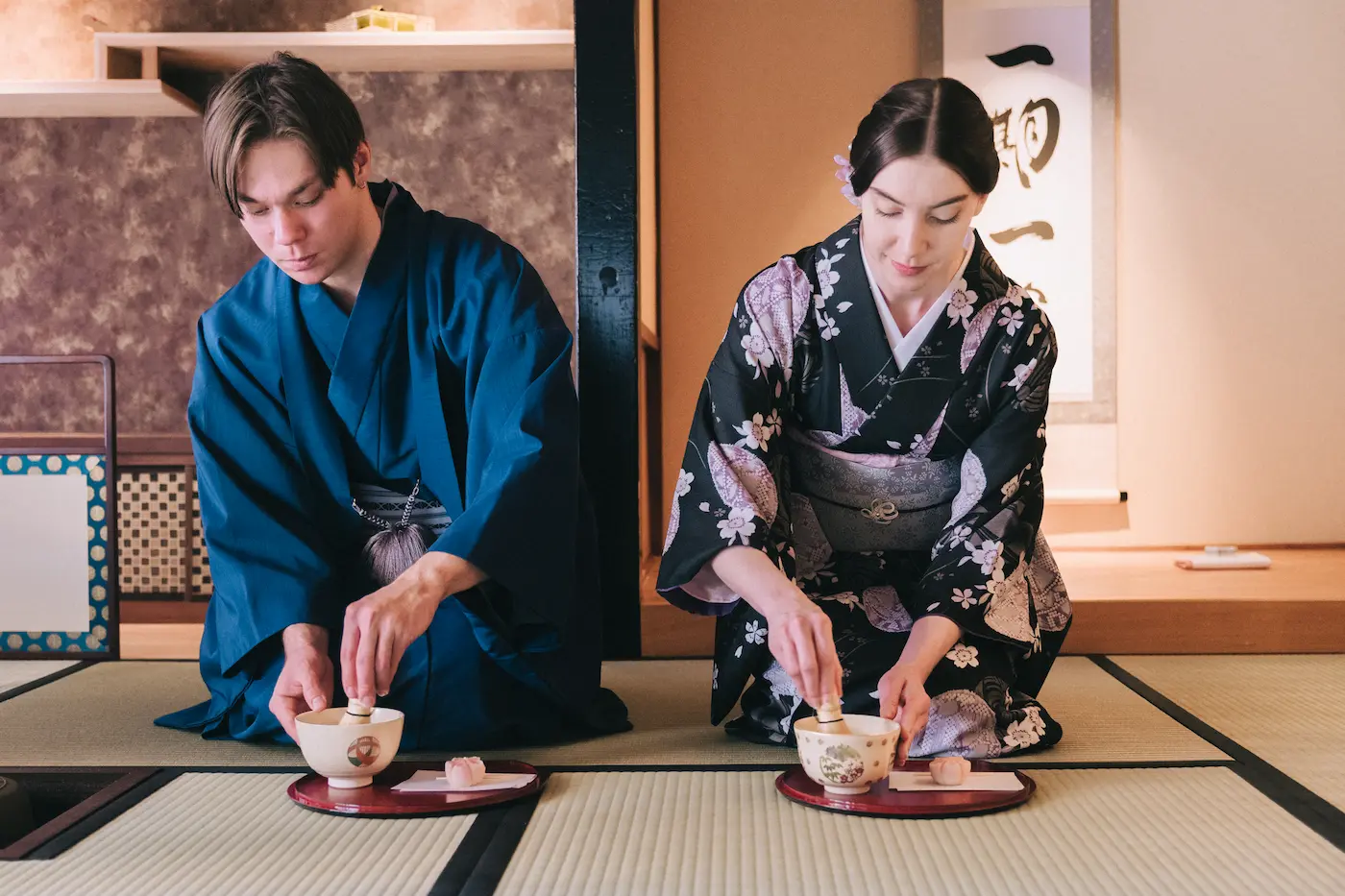
-
 Enjoy tea
Enjoy tea
Enjoy the tea that you brewed with the delicious sweets.
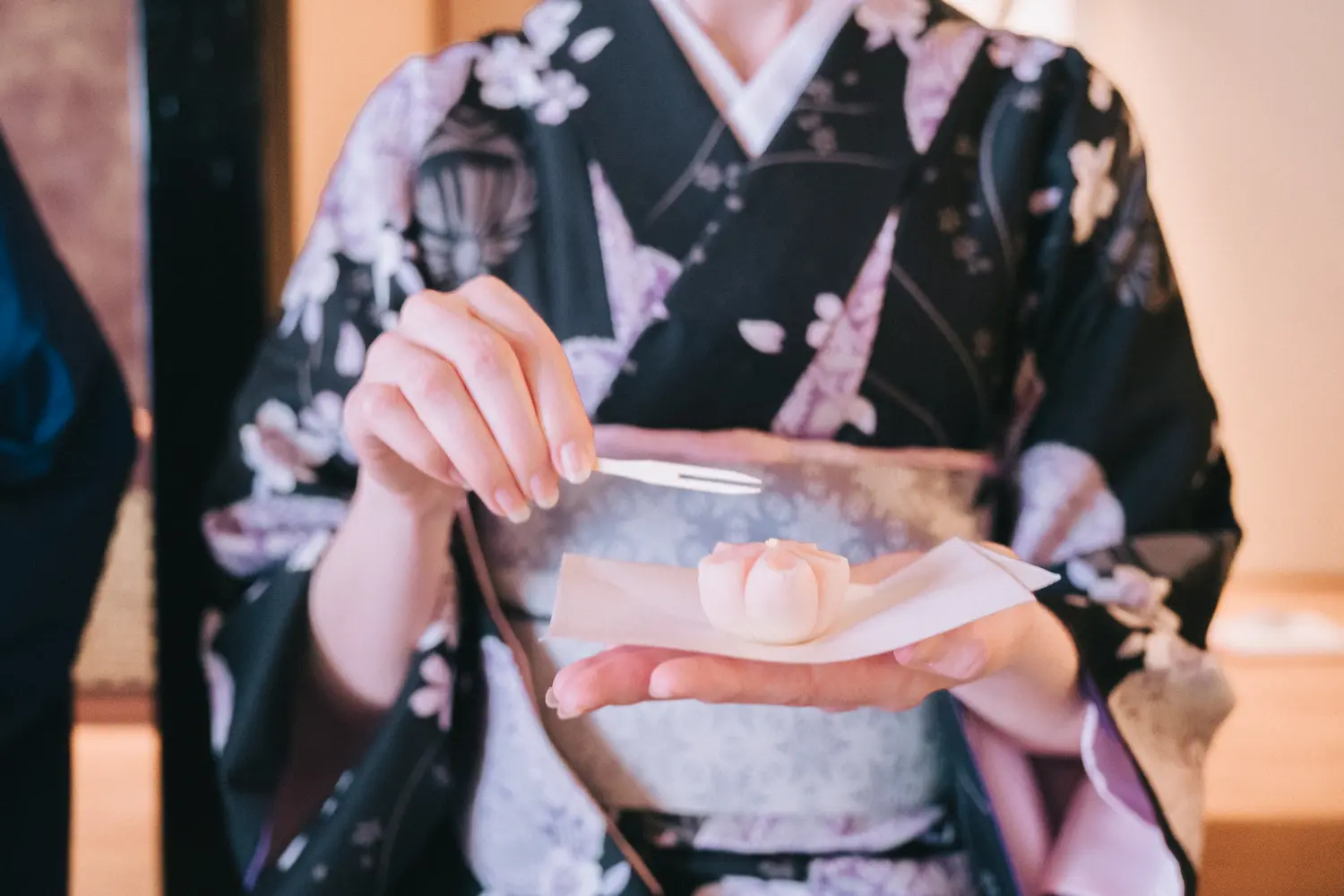
 Japanese Tea and Sweets
Japanese Tea and Sweets
The confectionery and tea served at the Orizuruya are from one of Kyoto's oldest and best-loved Japanese confectionery and tea shops.
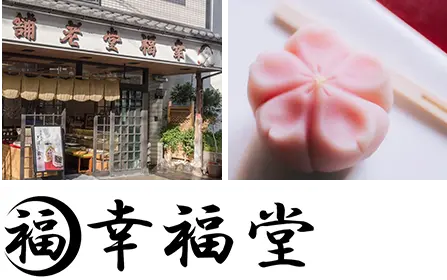
Traditional Japanese Sweets
KOUFUKUDO
A long-established Japanese sweets shop in Kyoto opened in the first year of the Meiji era and has been in business for 156 years. We offer seasonal Japanese Tea and Sweets.
Kyoto Cultural Experience Plan
All courses include
Kimono Dressing
Kimono Dressing

Tea Ceremony + Calligraphy Experience
13,200JPY(120min)
Tea Ceremony Experience Course
7,700JPY(90min)
Calligraphy Experience Course
7,700JPY(90min)
Tea Ceremony & Gold Leaf Experience Course
No new bookings accepted due to full reserved.
Dinner with MAIKO Course
With dress 49,500JPY
(180min)
Without dress 44,000JPY
(150min)
Tea Ceremony and Nishiki Market Walking Tour
13,200JPY (150min)
Studio Shooting Package
with a Kimono Dressing
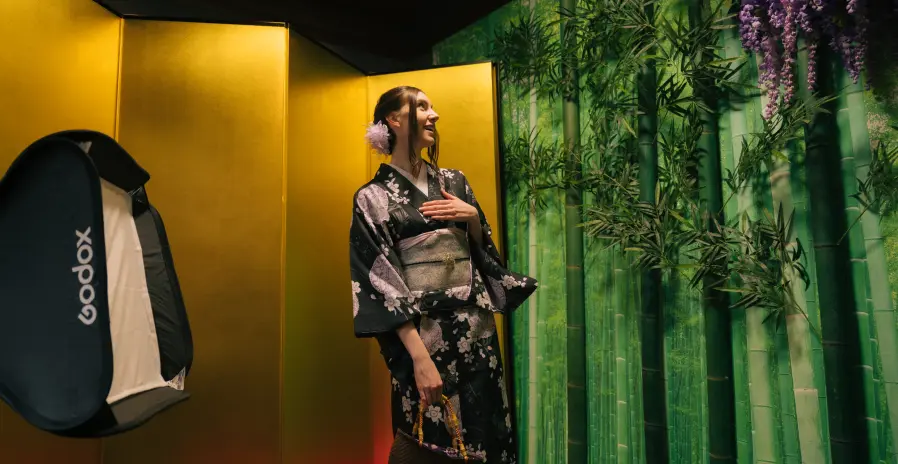
・Photography fee (2 shots) + 2 photos
+ photo frame included
11,000JPY
・Photography fee (2 shots)+ data included
11,000JPY
・Making the Original T-shirts
3,300JPY~
※Photography fee per additional shot 2,200JPY
per photo output 1,100JPY
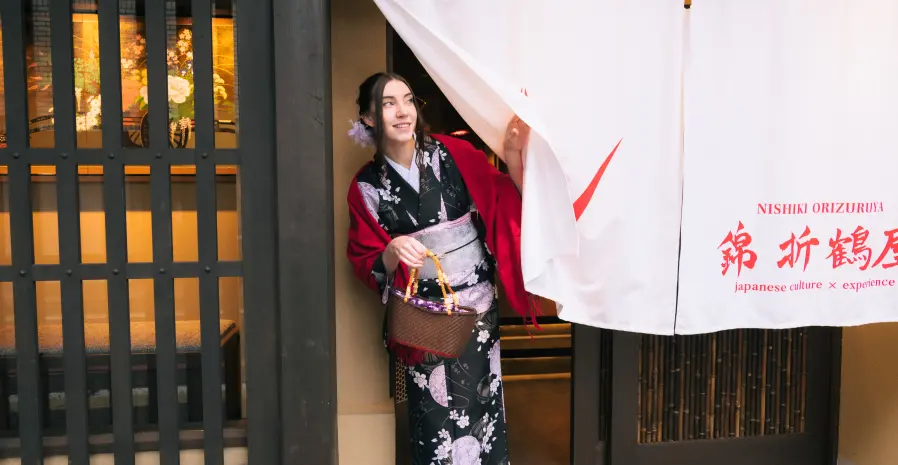
Going out wearing a kimono
Those who avail the Kyoto Cultural Experience Plan or the Studio Shooting Plan can also go out wearing kimono.
※Please return to the shop by 6:00pm on the day.
If you are late for your reservation, you may not be able to provide you with your experience.

